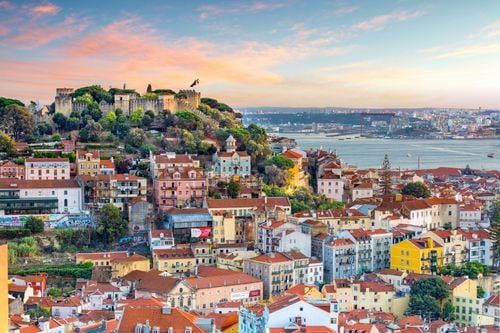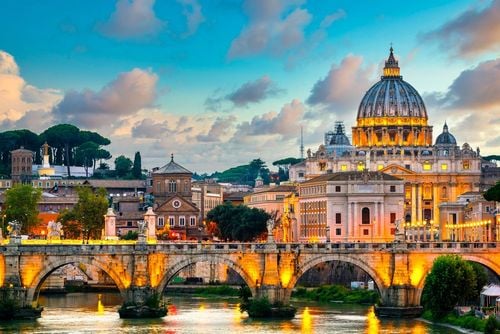A land of history and terroir far from boring
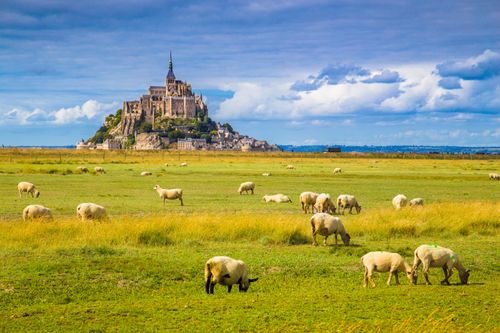
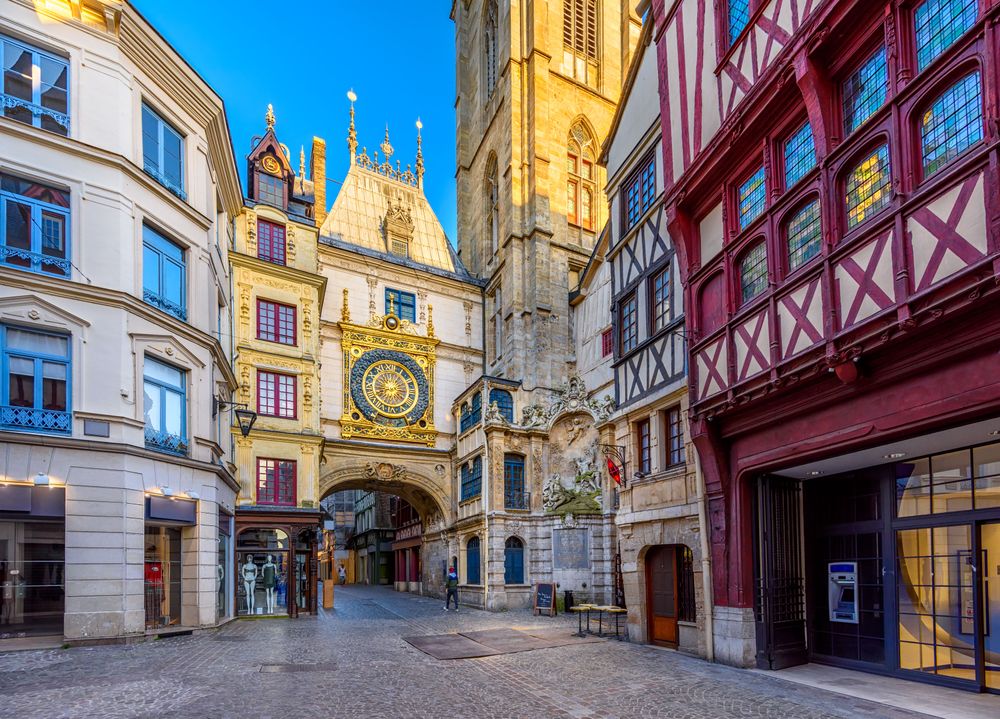
A land of history and terroir far from boring
On 6 June 1944, the Americans did not land on the beaches of Normandy for a holiday. Omaha Beach, Utah and Arromanches were the scene, on that day, of one of the most important moments in the history of Europe and France. Thanks to this landing, the Second World War came to an end. What remains of this event are the beaches, of course, and some of the scars that can be seen in the heart of towns whose architecture was turned upside down by the bombardments (Caen, Cherbourg, Le Havre, Falaise, Saint-Lô) and the Caen Memorial. A place of remembrance, the Normandy region fortunately preserves more than just the traces of this terrible conflict.

Normandy landing beach and its remains
- © diegomori80/ShutterstockThe famous Mont-Saint-Michel bears witness to this, as it is the most visited monument in France. It's easy to see why when you come face to face with this immense rock, almost entirely built, rising to a height of 170 metres! An outstanding example of the skills of craftsmen in the Middle Ages, Mont Saint Michel is not the only remarkable monument, even if it remains the most important in Normandy. There's also the Gros-Horloge in Rouen, a giant Renaissance clock face, and the Sanctuaire Saint-Thérèse in Lisieux, an immense Basilica of dazzling white.
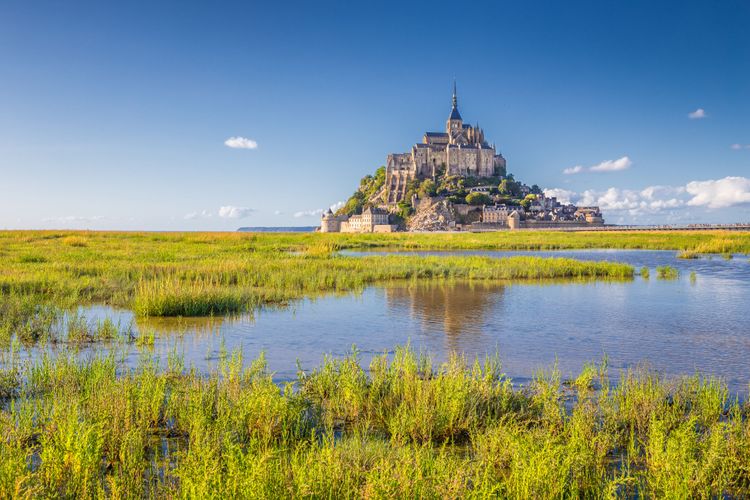
The famous Mont Saint-Michel in Normandy.
- © canadastock/ShutterstockThis region has seen the development of great architectural styles. It was even a precursor, heralding the arrival of Gothic art with the Norman school, whose masterpieces include the church of Saint Nicolas in Caen, Bayeux Cathedral and the Lessay abbeys. Gothic cathedrals in Normandy also produced such gems as Saint-Georges de Boscherville Abbey and the Palais de Justice in Rouen. The latter city, which Victor Hugo called "the city of a hundred steeples", also boasts a gigantic Gothic cathedral: Notre-Dame-De-l'Assomption. One of the cathedral's towers, the Butter Tower, so named because its light colour stands out from the rest, inspired the construction of the famous Tribune Tower in Chicago. Today, the building stands as a testament across the Atlantic to the magnificence of Norman architecture. Art then moved to Giverny, with Claude Monet, whose gardens (on canvas) now sell for millions and attract thousands of visitors, along with the Museum of American Art.
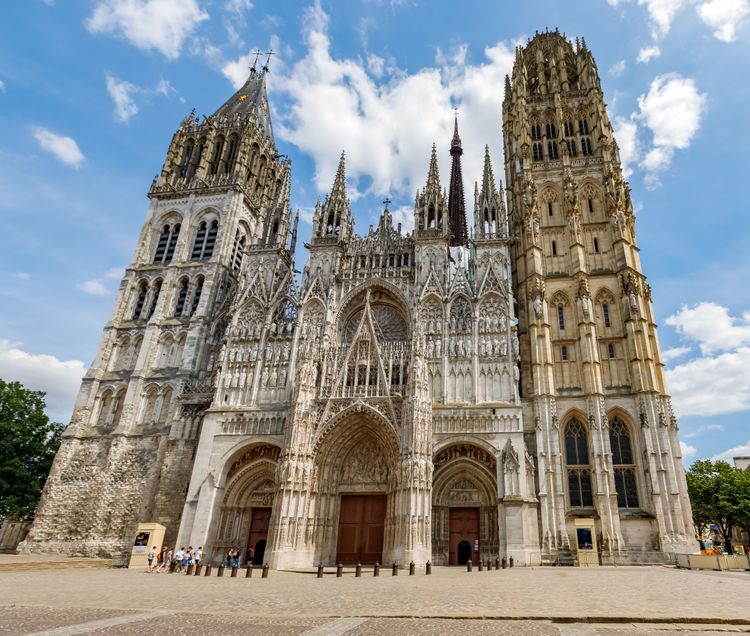
Just like Deauville, with its film festival, boardwalk, grand hotels and races, which opens onto the fabulous Côte de Nacre from Caen and the Côte Fleurie from Trouville to Honfleur. The cliffs of Etretat are not to be outdone. The latter have inspired many a famous artist, starting with Maurice Leblanc and his famous character Arsène Lupin, who hides his treasures in thehollow needle. But also Monet and his famous painting of the Manneporte d'Etretat.

Wide-angle view of the Aiguille on the left, the Manneporte on the right and Jambourg beach in Etretat, Normandy, a popular seaside resort known for its chalk cliffs.
- © olrat/ShutterstockAs you stroll along this seafront with your nose in the wind, your stomach opens up too! When it comes to gastronomy, Normandy is as generous and varied as its architecture and nature: camembert, andouille, teurgoule, apples, cider, seafood or pre-salted leg of lamb...
With all that, it's easy to see why it was so important to liberate this region first! After all, Normandy is the second most visited region in the world's most touristic country.


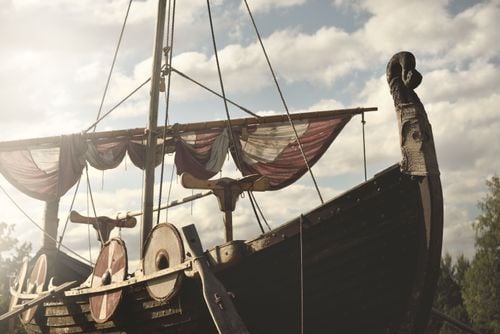




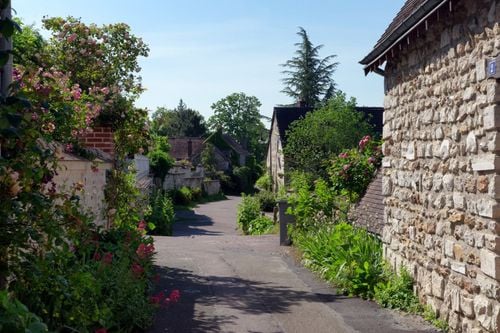
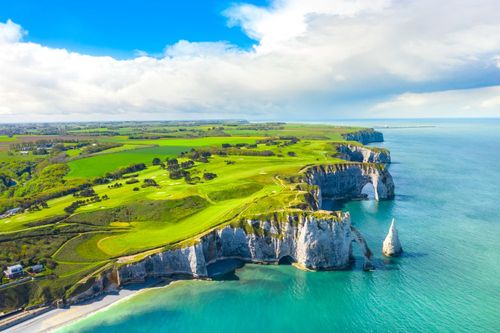
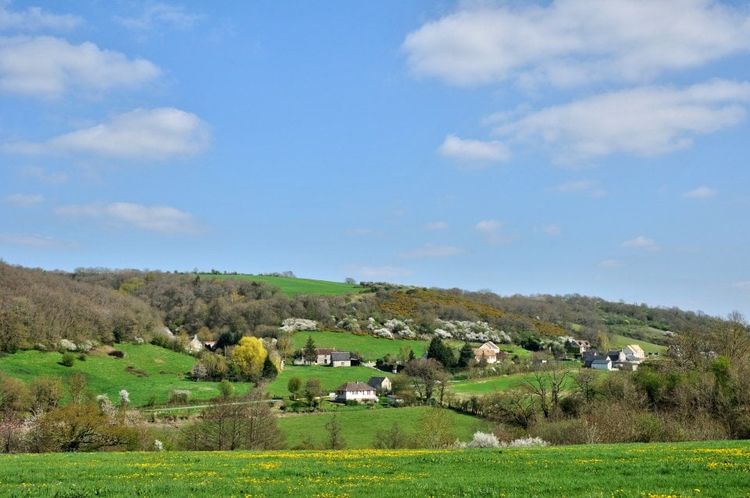 1
1
 2
2
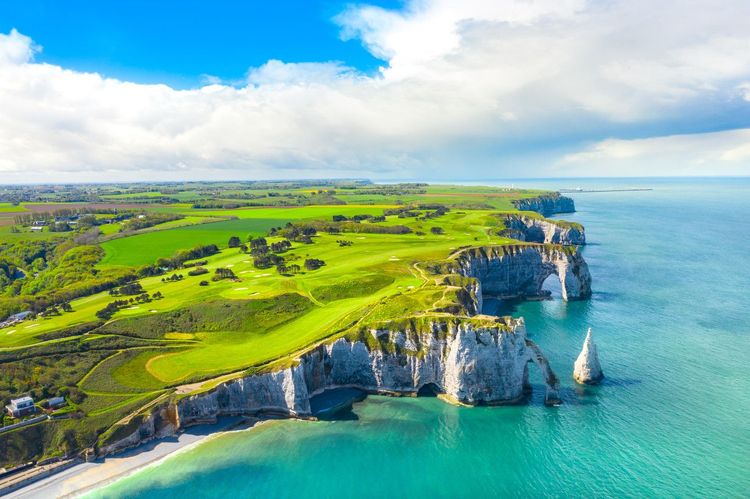 3
3
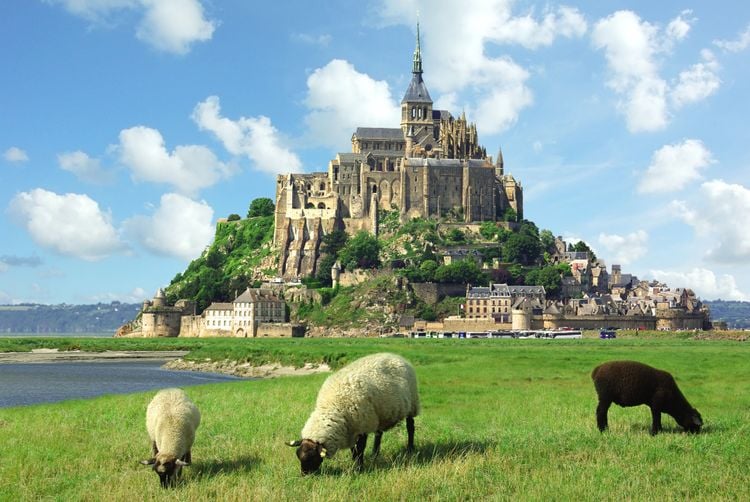 4
4
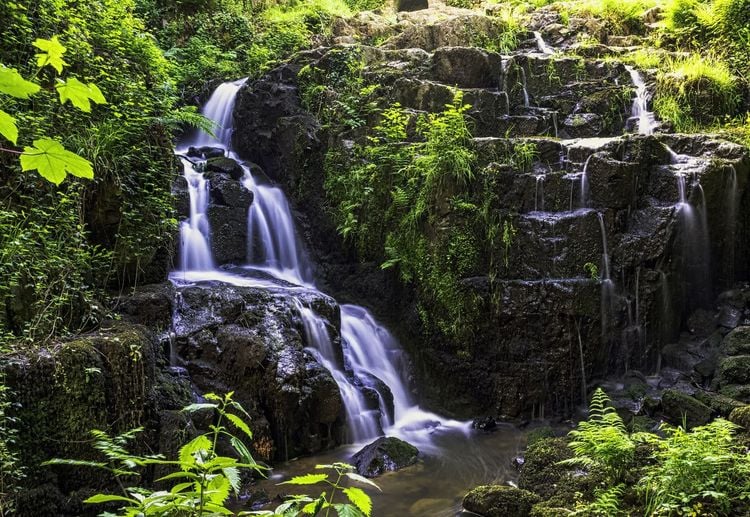 5
5
 6
6
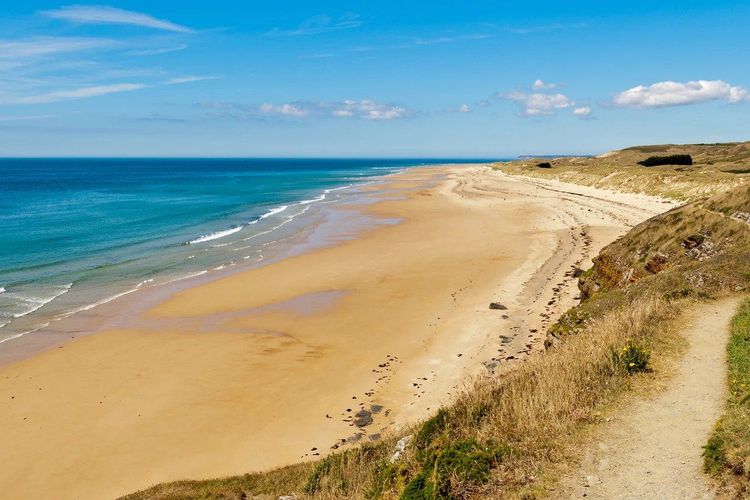 7
7
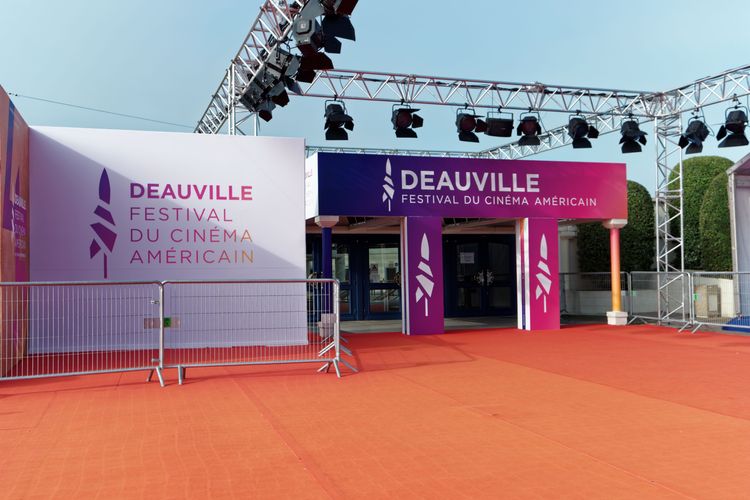 8
8
Normandy has several competing airports, and although Deauville dominated the market for several years, Rouen has recently received the most investment from the region. Depending on where you're coming from, it's still preferable to come by train or bus, which are less polluting. Normandy is only an hour and a half by train from Paris Saint-Lazare, so is easily accessible by train from the capital.
Unsurprisingly, Deauville is the winner in terms of the number and quality of hotels. However, one of the region's finest hotels is in Rouen: the Hôtel Bourgtheroulde, right in the heart of the historic district on Place de la Pucelle, the building itself is a monument worth visiting.
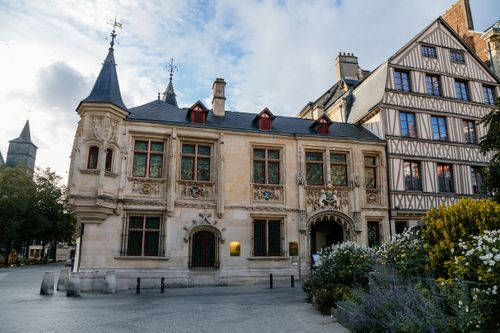
There's no shortage of specialities in the region. We could write pages about the region's cheeses alone. The best-known is of course Camembert, and although there are many excellent cheeses in the region, we'll be choosing the Camembert of the "5 brothers", a small producer based in Bermonville, which is one of the best in Normandy. Pont-l'évêque, Livarot and heart-shaped neufchâtel are all worth trying. Normandy is also famous for its dishes based on cream and mushrooms, whether in escalope normande, mussels or other dishes. But it's also famous for its recipes based on apples, both sweet and savoury, such as tarte normande, boudin noir and andouilles aux pommes. For dessert, there's also cream and apples, but not only: Teurgoule, a rice pudding with Norman caramel and cinnamon, as well as any recipe based on milk jam.
Unfortunately, we don't recommend packing cream and cheeses, however good they may be, unless you eat them quickly. However, there are other Normandy delicacies that keep very well and are perfect as gifts: the various alcohols produced in the region. The most famous of them all is cider, but it's not the only apple-based spirit. There's something to suit every taste and to varying degrees: cider is very light, while pommeau, which is not sparkling, is comparable to a stronger apple port. And last but not least, Calvados, a spirit also made from apples and consumed during the "trous normands". Another strong spirit is Benedictine, a liqueur that was originally a health elixir developed by a monk. It is the product of fermentation, distillation and ageing of 27 different plants and spices.
To get around, visit, admire and enjoy the whole region, there's nothing more practical than hiring a car or bringing your own. The region is served by a bus network, but it would be a shame to waste so much time during your stay.
There's nothing dangerous in Normandy on the face of it, and you won't be attacked by those peaceful cows. However, as is always the case in big cities, be careful with your belongings. It would be a shame to let this kind of incident spoil your holiday.
Contrary to popular belief, it doesn't rain that much in Normandy. (You should bring an umbrella, though - we did say "not that much", but it does rain, sometimes...often). The region can be enjoyed all year round, but autumn or spring are preferable if you're aiming for destinations like the D-Day landing beaches, Mont-Saint-Michel or Deauville. These three places are overflowing with tourists in summer, unlike the rest of Normandy.
To avoid the constant flow of visitors to Mont-Saint-Michel, the most visited monument in France, avoid school holidays, weekends and especially visits in the middle of the day. An early-morning visit can be just as enjoyable with a brunch of Mère Poulard omelettes.
explore Try out our comparators
It is Easy to travel

